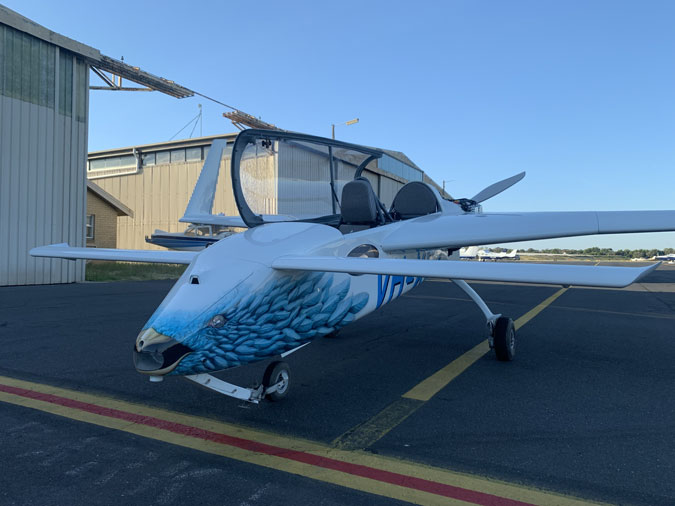| Date: 11-21-2024 | |
| Number of Hours: 0 | |
| Manual Reference: |
This is the 10th taxi test now. Still just around the parking area and not yet on the runways. The cowls are still off as I evaluate the cooling, radios and engine further.
I’m now using a ‘fuel map’ from another LIO-390 engine what has the same Superior cold air induction. I did try the map from the test cell for this engine but it had the Skydynamics sump at that time. First up, the fuel map that was with the plane when I received it was unusable and the cause of many expensive and serious problems. I do not believe I altered it by accident, I don’t even think that is possible given it was so far wrong.
The current map is usable but nowhere near right. The idea is to have an air/fuel ratio (AFR) at 14.4-15 for cruise and 13.2 under load. So I need close to those numbers where I read the AFR in the cockpit over the whole rpm range. You can download the file to a PC, adjust each parameter for each 100rpm and each map setting manually and then upload it again.
I can tweak in the cockpit with the ‘Tune’ function but not so precisely. It takes the numbers and averages them. Another way is to see what I have and use the Fuel Trim knob (FTK) to tweak on the fly. Those changes aren’t permanent and as I change the rpm or the MAP changes in the climb or descent, I’d have to readjust the FTK again. A bit like a mixture control so no big deal.
For now what I have is useable but a little rich over the range. I’m still having problems starting the engine. This may be the rich/lean settings at very low RPM or it may just be me learning what the engine likes in terms of using the accelerator pump which is a fast throttle movement.
The last run I got the engine to 2300RPM in the runup bay. The brakes held but I really stood on them. This is close to what I’ll be using for take-off so we are good here. However as expected the engine got really hot as did the coolant and oil. The coolant pressure was right up close to maximum before the overflow is engaged as well. I backed right off of course, warnings were on the panel and I got a nice female voice in my ear telling me that certain pressures and temperatures were in the red. Not in those words however.
Despite returning to idle levels the oil stayed pretty hot, the coolant levels and pressure came down slowly. What I have found is that if I stay at around 1000RPM or less I can sit there without the temperatures rising. The two fans are doing the job given we have no air through the radiators from forward motion. I looked at the data as there is room for another fan which I thought might be needed with the cowls on. However with the fans and two pumps running, current draw gets to 54 amps and that is almost the limit for the 60amp alternator. The 5.2″ Spal fans draw a maximum of 5 amps so I’d be getting very near the limit if not over it at low RPM. We might be able to tweak the regulators up a fraction however. Without the fans, one pump hardly running and flight instruments and lights I’m at 34 amps.
I have some heat shielding for the cowls on order. I need to adjust a fastener and a few other configuration jobs. I’m still trying to sort or the squelch levels on both radios. They break through with the engine on, its perfect engine off so I need to tweak that while its running. To do this I need ‘config mode’ and to turn off the engine instruments. The GTN750 radio can be done OK instruments on. This is my next task in the runup bay. I will put the cowls on for that but I’ll keep things at 1000rpm so nothing gets too hot.
Once the radios are sorted out AND the heat shielding on the cowls is installed I can contact the tower and see when I can use the active runways for slow and then fast taxi.

